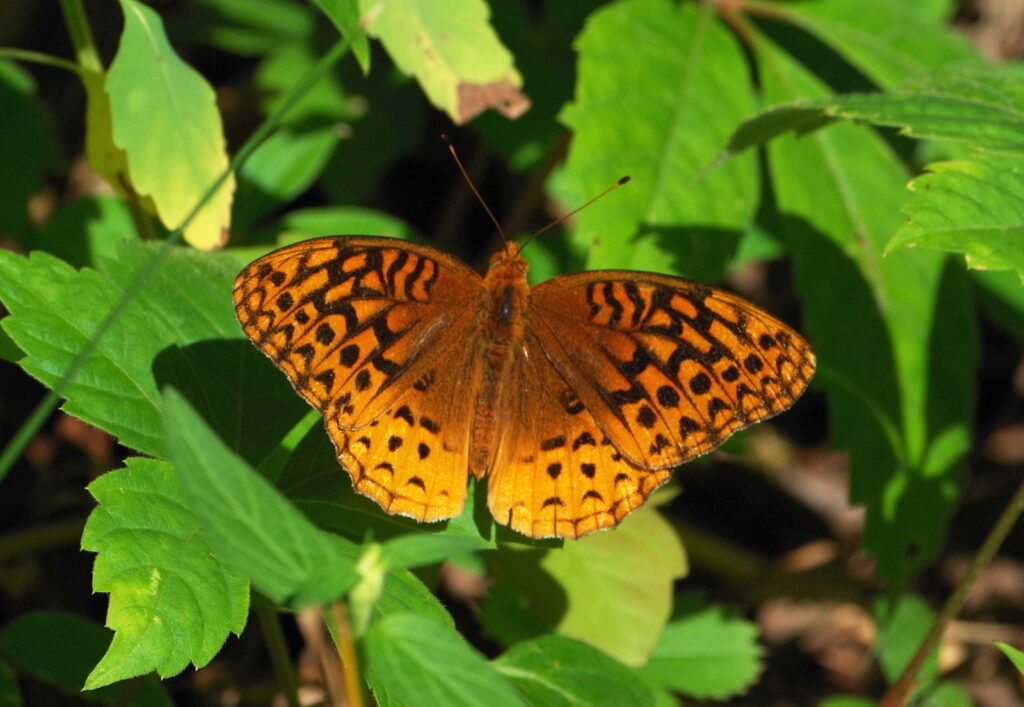Everything butterfly-related is a running a little late this year because of the cold spring. Normally I would see these in July, but now they are here in August. I’m not going to complain.

An Exploration of Nature
Everything butterfly-related is a running a little late this year because of the cold spring. Normally I would see these in July, but now they are here in August. I’m not going to complain.

Ahh, skippers. So many, so very hard to tell apart. In this case, I feel confident in my id.
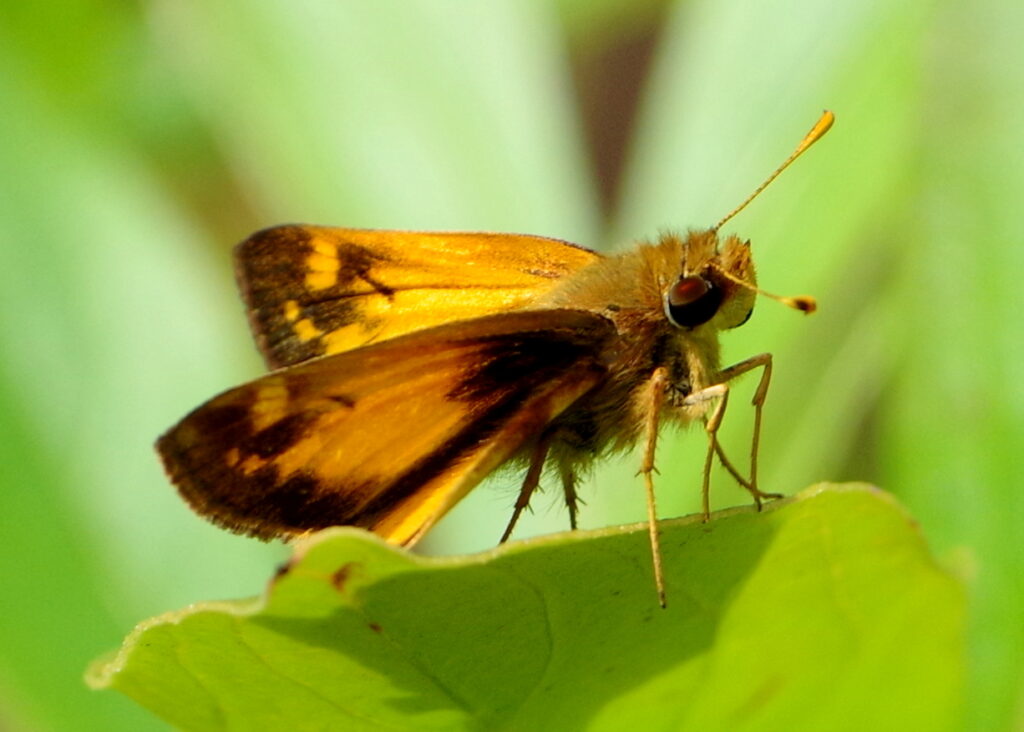
Identification is tentative but probably correct or very close. It’s a wasp-mimic, but the eyes are distinctly those of a fly. It was strikingly beautiful in the field. It’s not a great photo, but its one of only two I got before it flew away. The colloquial name, while amusing, is not a pejorative but instead originates from the fact that the heads of these flies are always wider than the thorax.
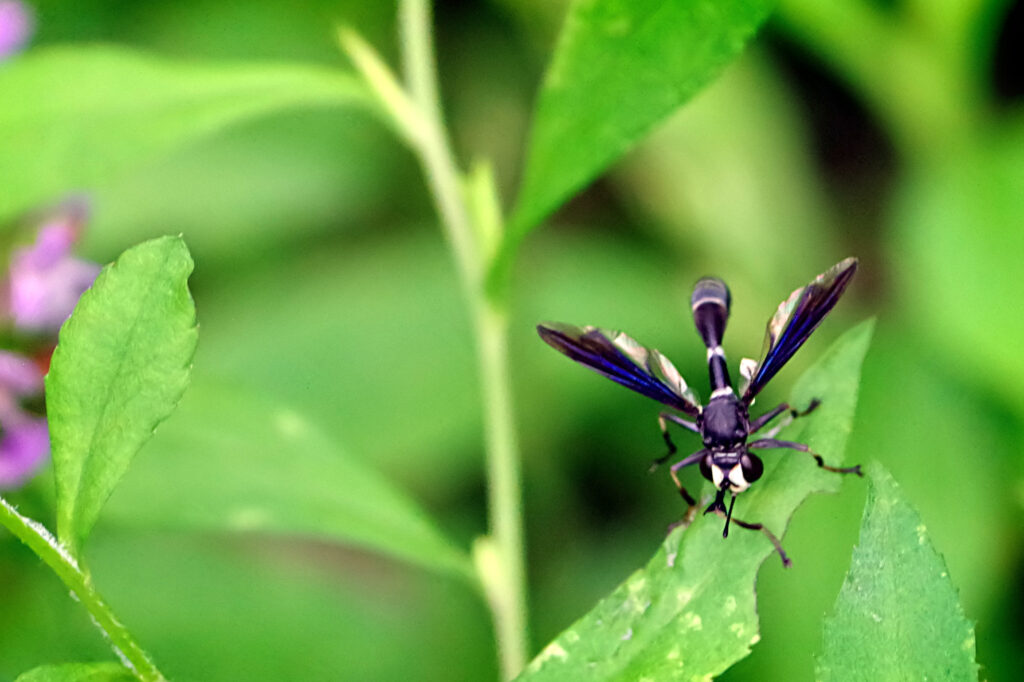
An interesting fly in both appearance and behavior. Something like the “Brown Cowbird” of insects, it will lay its eggs in the nest of wasps. The unsuspecting wasp stocks the nest with provisions for its own larva, but this fly’s larva gets fed instead.
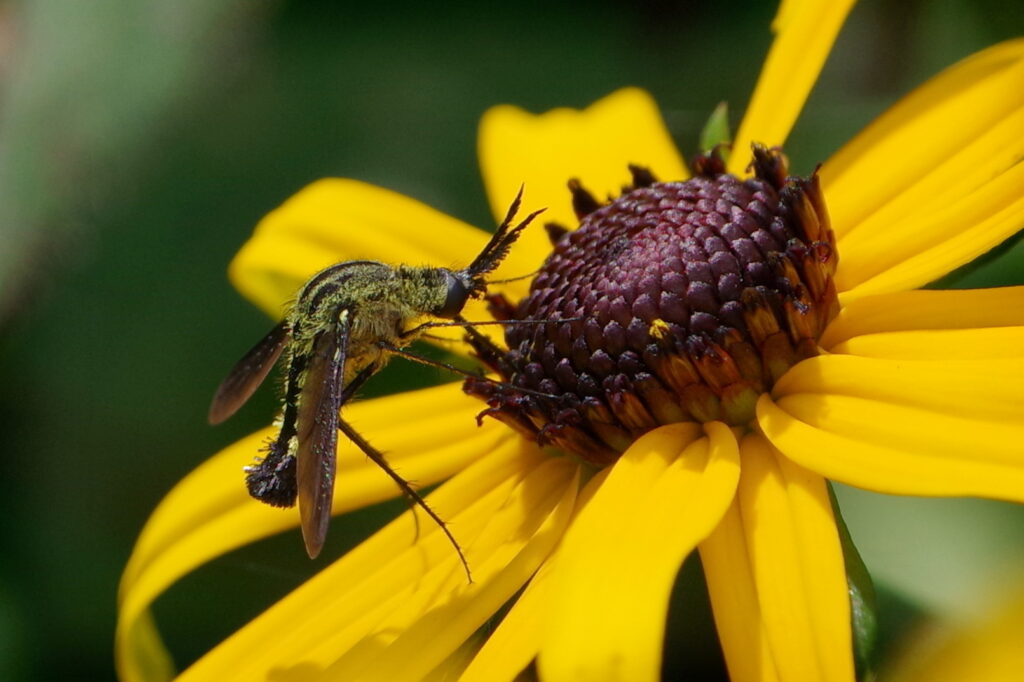
As the name implies, this is a moth that bears a passing resemblance to a hummingbird when seen with the naked eye. The wings beat very fast, just like a hummingbird, and I was fortunate to capture an image where they could be clearly seen.
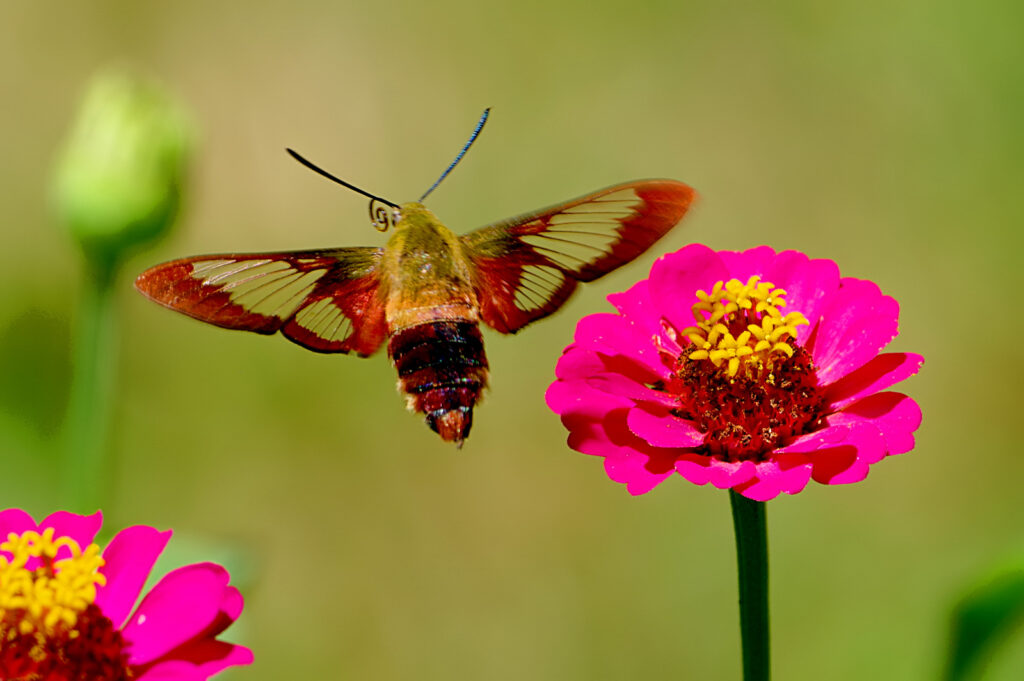
My wife spotted four juvenile green herons at the end of the fishing dock on Bath Pond. Here is a picture of two of them. At first glance I thought they were American Bittern, but the body posture and the yellow around the eye confirm them as Green Heron.
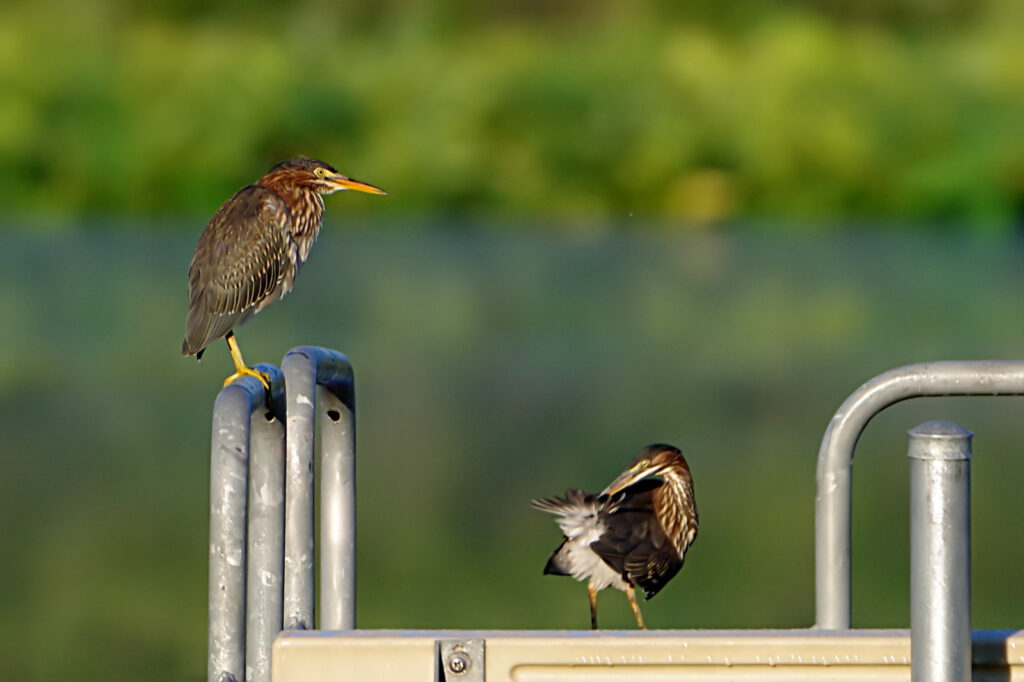
These identifications should all be taken with a grain of salt, which is to say– the best that I could do.
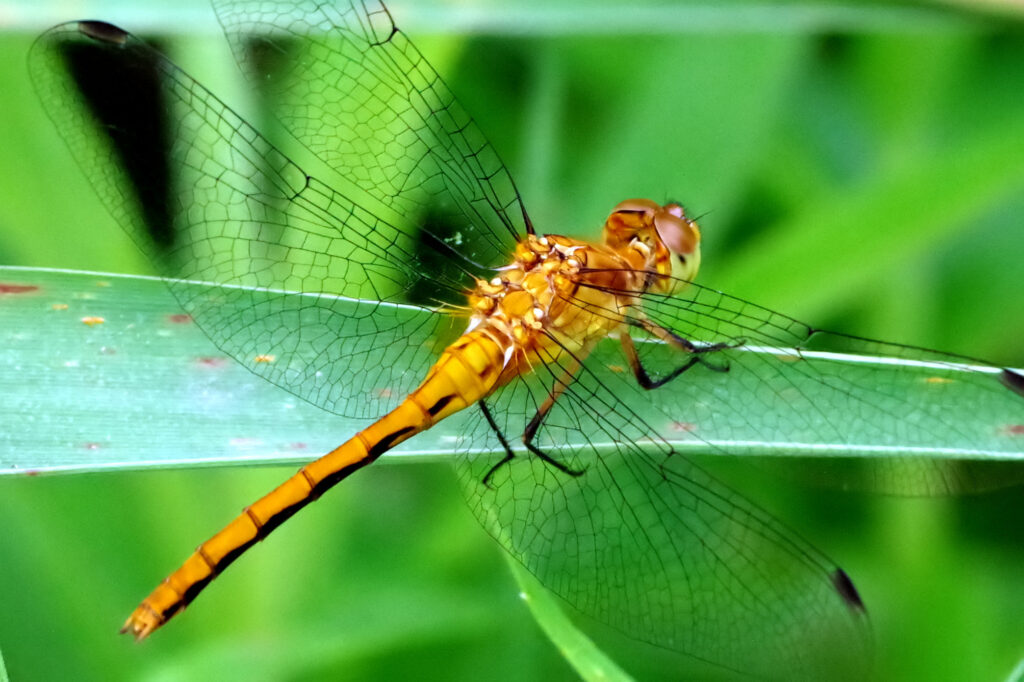
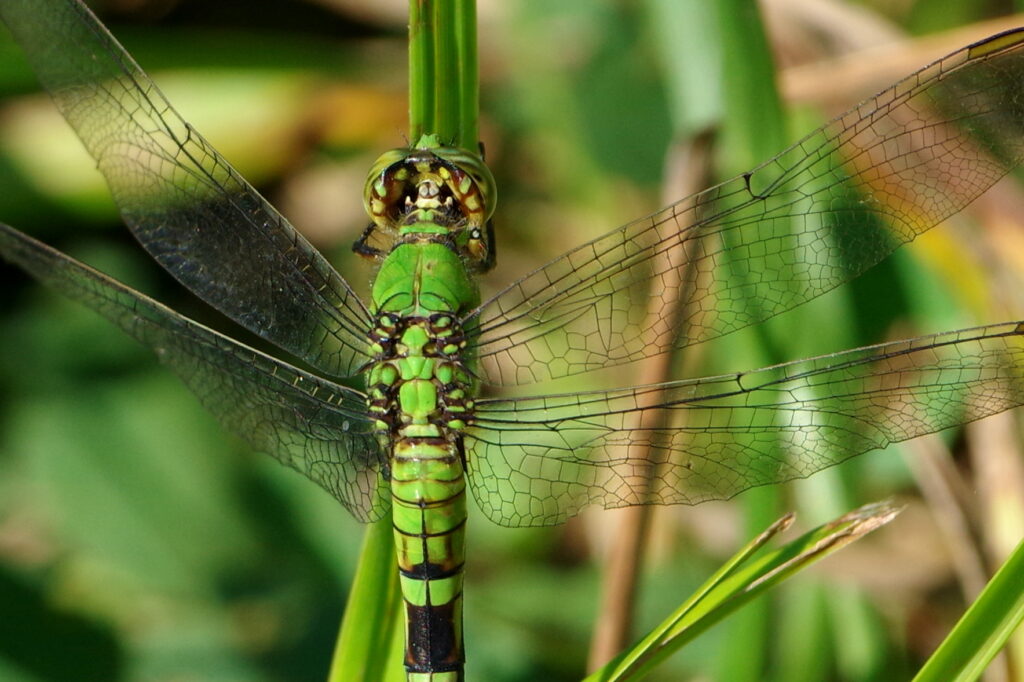
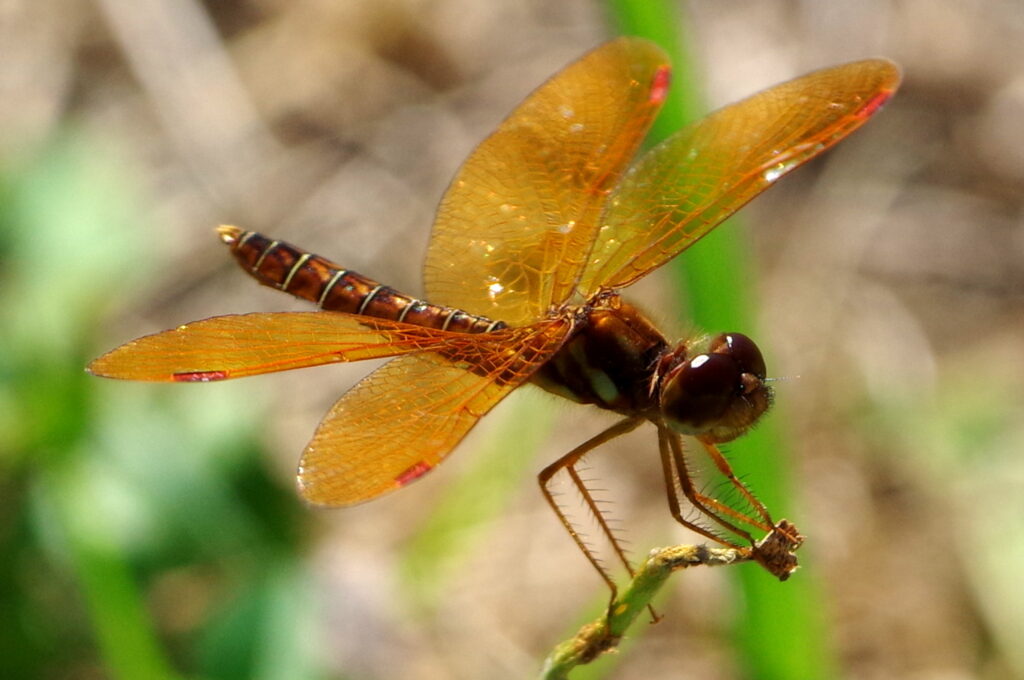
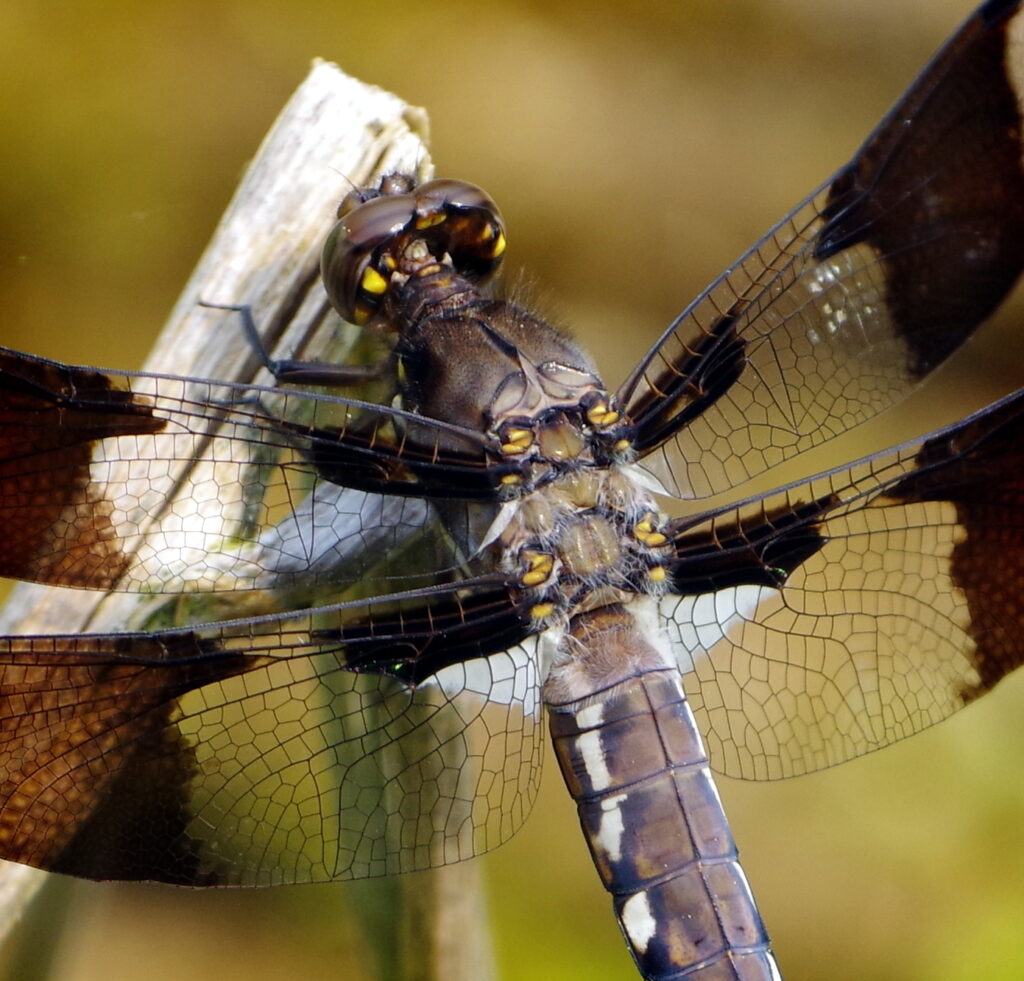

I’m not qualified to identify most dragonflies; there are too many species (over three-thousand) and many that look very much alike. However, I’m fairly confident that this is a Blue Dasher male, possibly a fresh hatching because the eyes don’t look fully developed.
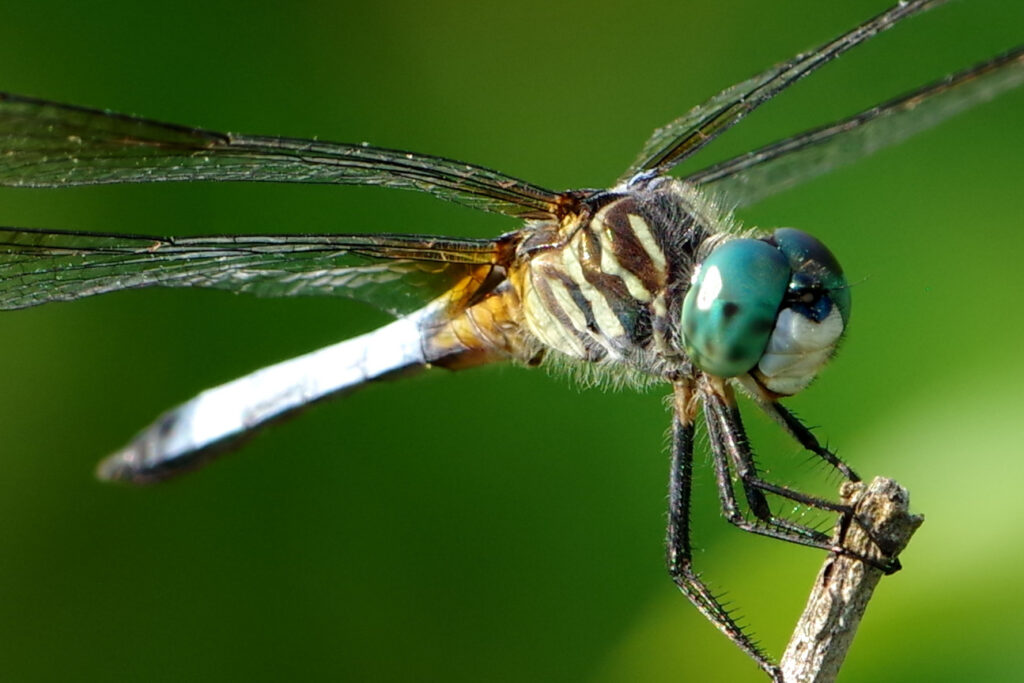
In general, butterflies have been few and far between this year. Many people have noticed, and there is speculation on causes from the unusually cold spring all the way to the nefarious “climate change.” So far I’ve only seen one of these in my yard. (And yes, that’s Poison Ivy that the Fritallary is resting on.)
